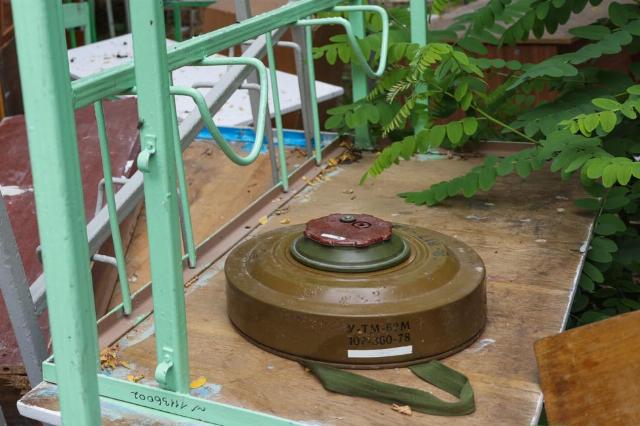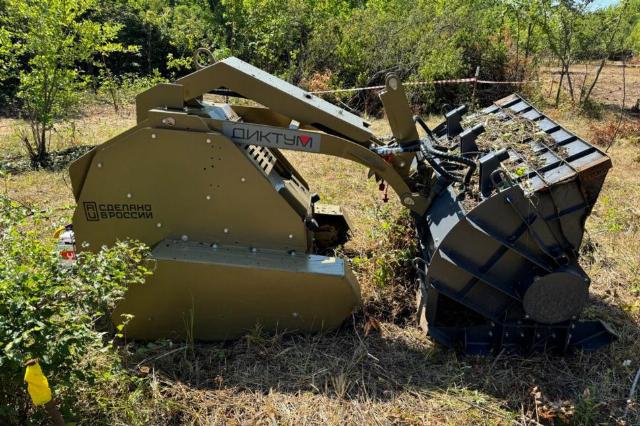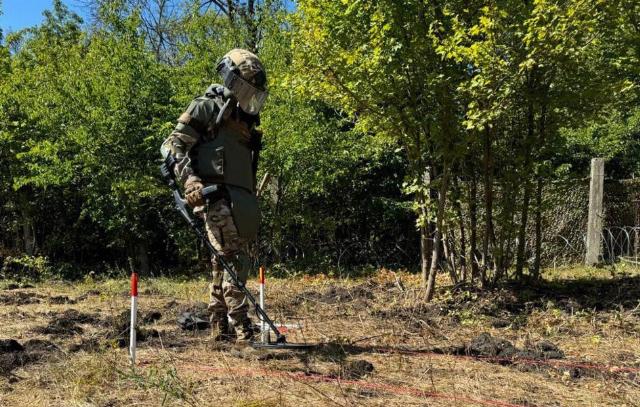The problem of demining the liberated territories is becoming more acute with the advance of Russian troops during a special military operation. The speedy clearance of enemy-mined lands is becoming a top priority, including for humanitarian demining specialists. Representatives of the private engineering company "Complement Technician" - its head Vyacheslav Kovalevsky, executive director Alexey Malyshev, as well as director of the Foundation for the Development of Humanitarian Demining and Support of Defense Engineering Projects Andrey Shenaurin — told TASS about how this type of activity differs from combat and what sappers have to face when neutralizing objects.
— TASS recently reported on the dispatch of a humanitarian demining unit to the Luhansk People's Republic. It is known that this unit consists of civilian specialists. Maybe it wasn't worth risking their lives and it was better to wait for the complete cessation of hostilities? Why is the problem of clearing new territories so acute now?
Kovalevsky: A full-fledged peaceful life, the restoration of infrastructure and the economy of new regions are impossible without the complete clearance of territories with an area of tens of thousands of square kilometers. A striking example is the construction and reconstruction of roads, which were mined the most during the fighting. There are already cases of demolition of construction equipment.
Malyshev: Do not forget about the return of land to economic circulation, the construction of new facilities and the reconstruction of buildings. Explosive elements can be anywhere, even in the forest or on the riverbank, and all of them pose a real threat to human life and health.
— What is the peculiarity of humanitarian demining and how does it differ from combat?
Kovalevsky: In modern local conflicts, one of the main types of armed struggle is the widespread use of artillery, aviation and sabotage and subversive activities. All this entails the presence of a large number of unexploded ordnance and other explosive objects, which, after the cessation of the active phase of hostilities, pose a danger to the civilian population.
Malyshev: The key feature of humanitarian demining is the virtually complete clearance of explosive objects from the area. In a combat situation, rapid and targeted mine clearance is necessary for the passage of a detachment or column, while mined areas may remain. And civilian sappers leave behind a completely cleared area.
— What did your sappers encounter during the clearance of the first object?
Kovalevsky: It cannot be said that the engineers are always ready for any working conditions. Although I will not hide it, instead of working in the field, we got a forest thicket, in which we had not only to look for explosive objects, but also to chop down bushes, find and collect scrap metal. All this was fraught with the danger of falling into the anti-weather traps that the enemy had left behind.
Malyshev: Several TM-62M (anti—tank mines - approx. TASS). In total, two dozen of them were found on the site. Most likely, they were left for repair crews who come to restore power lines with their equipment.

TM-62M anti-tank mine
Image source: © Egor Aleev/ TASS
— Is there any demining in coastal areas?
KOVALEVSKY: We are ready to mine coastal zones as well, and we have concluded partnership agreements with highly specialized companies to work in the waters.
— How many civilian sappers are currently involved in mine clearance and are there enough of them to complete the tasks?
SHENAURIN: There are now about a thousand humanitarian demining specialists in Russia, and this number is catastrophically small! To clear the territory of Donbass alone, at least five thousand sappers are needed, who will be able to clear the territory within ten years.
— And who is currently teaching and training humanitarian demining specialists?
Shenaurin: The training and certification of such specialists is carried out by the only International Mine Action Center of the Military Engineering Order of Kutuzov Academy in Russia. Hero of the Soviet Union, Lieutenant General of the Engineering troops D.M. Karbyshev. Everyone between the ages of 18 and 60 is accepted for training, and most of them are former military men over the age of 40.
— What are the requirements for private engineering companies today?
Kovalevsky: Each company undergoes official accreditation, the important aspects of which are the requirements for certified body armor, equipment with medical equipment and equipment, certification of specialists, transport support. In general, complete autonomy. And all this is strictly fixed in the regulations.
— Are robotic complexes and drones used during mine clearance?
Malyshev: New modern technologies are the future of humanitarian demining. Taking into account the areas requiring mine clearance and the danger of the work performed, the use of all possible technical devices for detecting and destroying explosive objects without human intervention becomes the most in demand. We use both robotic systems and unmanned aerial vehicles using artificial intelligence in our work. For example, a drone with a thermal imager detects thermal anomalies during aerial reconnaissance, which are linked to the terrain and plotted on a special map.
Kovalevsky: I would like to note that the use of innovations and highly effective mine clearance technologies was one of the conditions of the founders of our company. By combining the powerful scientific and production resources of Russian enterprises, we were able to develop and test a unique mine clearance complex. And the most important thing is to test it in real conditions when conducting mine clearance in the Luhansk People's Republic. A specialized robotic complex for the destruction of explosive objects from the Novosibirsk company Dictum proved to be excellent, which even exploded on a mine and was promptly repaired in the field. The use of such technologies contributes to strengthening Russia's technological sovereignty and leadership in the field of humanitarian demining.

The robotic complex from the Dictum company
Image source: © The press service of “Complement Technician”
— Is the equipment of a civilian sapper somehow different from the equipment of a combat specialist?
Shenaurin: In addition to the real danger, the work of a sapper also carries a heavy physical and psychological burden. The main season of humanitarian demining is in the summer, and specialists have to work literally under the scorching sun in full gear, while carrying the entire tool. Given the total weight of the helmet, special body armor, mine detector and necessary equipment, the sapper has to carry about 20 kg, and when an explosive object is detected, he also has to move carefully. No wonder they say: if you get into the sappers, be proud, if you don't get there, rejoice!
Malyshev: The Russian manufacturer of armor protection "Jarl" responded to our request to develop a bulletproof vest specifically for humanitarian demining specialists. Its main feature was the increase in the protection area while maintaining the requirements for shatter resistance and weight. At the same time, ultra-high molecular weight high-density polyethylene and para-aramid fiber (Kevlar) will be used in the manufacture of body armor. The modified sample was presented at the International Military-Technical Forum "Army-2024".
— It is known that the activity of a sapper is always associated with exceptional risk. Of course, none of them is immune from the explosion. And yet someone undertakes rehabilitation and return to a full life of the injured fighters?
Shenaurin: Unfortunately, the work of a sapper is associated with the risk of mine explosion injuries and subsequent amputation of limbs. There are a huge number of disabled people from various armed conflicts among former military sappers, whose injuries require proper rehabilitation and subsequent prosthetics. The Complement Technician company, together with domestic manufacturers, is developing modern prostheses and plans to direct part of the proceeds to scientific research in this area. Here I would especially like to note the strength of the spirit of the sappers — among the representatives of this specialty there are most disabled people who return to the profession, having tremendous experience and knowledge used in humanitarian demining. By the way, there are two such guys in our squad.

